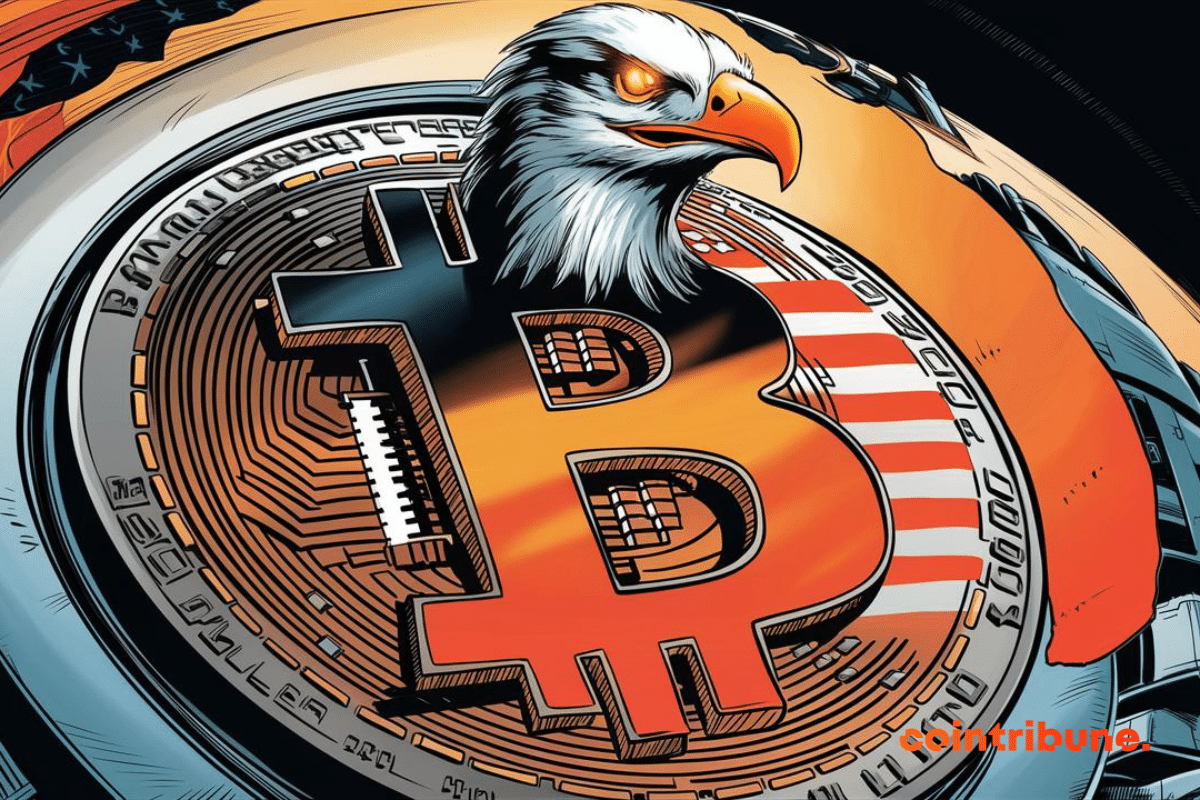18h05 ▪
6
min read ▪ by
Bitcoin is Donald Trump’s plan B if he fails to persuade the BRICS to stop their rebellion against the dollar.


Eco War
Donald Trump made two strong announcements during his campaign. The threat of a punitive tariff for countries that distance themselves from the dollar and the creation of a strategic reserve of bitcoins.
Republicans seem to imagine that tariffs will magically bring an industry out of the ground. The result will more likely be inflation coupled with an economic recession. Knowing that the United States already has major inflation problems.
They are also massively in debt to the rest of the world. This ability to incur debt is largely due to the fact that nations around the world place their trade surpluses in American debt. However, a restriction on trade through tariffs will also limit the ease with which the United States can incur debt.
Donald Trump is playing a dangerous game, but his threats are symptomatic of a very real problem: globalization has come at the cost of deindustrialization and enormous trade imbalances that will need to be resolved.
The initial bet was that we would succeed in maintaining a technological lead. Western engineers and scientists would innovate while workers from the rest of the world manufactured. That bet has been lost since China now graduates more engineers than the rest of the world combined.
It is true that China imports hundreds of billions of microprocessors each year and that the CEO of ASML estimates they are15 years ahead in the field. But even so, the bill is starting to sting and the backlash is fast approaching.
From Barter to deficits
There could have been no imbalances in the (probably mythical) era of international barter. Wine was given, cotton received, and vice versa. However, an international trader would not necessarily find goods abroad that could be bartered. Hence the emergence of money alongside trade imbalances.
Under the gold standard, the deficit country sends gold in exchange for goods. Trade stops when there is no more gold, which forces the deficit country to reduce its trade deficit, one way or another.
Today, the international monetary system is dominated by the dollar, which gives the United States the privilege of paying for its imports with nothing more than an acknowledgment of debt. And this, let’s emphasize, because surplus countries accept (with a knife to the throat) to place their reserves almost exclusively in American debt.
This money returning home artificially supports the dollar and allows the United States to import more than it exports. This is the infamous exorbitant privilege: being able to show a chronic trade deficit without the greenback depreciating.
In short, a good part of the standard of living of Americans depends on their ability to exchange Treasury bonds (acknowledgments of debt) for tangible goods.
The Collapse of the Bretton Woods Agreements
The dollar established itself as the international currency after World War II, when the United States was the world’s creditor. This is no longer true at all. American public debt accounts for nearly a third of global public debt! This ability to incur debt is reflected in the trade deficit and the deindustrialization of the country.
Perhaps things would have turned out differently if American delegates had accepted John Maynard Keynes’ solution at Bretton Woods (1944). But that was not the case. Instead, it was decided to tie the dollar to gold at a fixed rate of $35 an ounce and to make it the international pivot currency.
Currencies were thus theoretically tied to gold, but only through the dollar. Why not trade directly in gold? Because it is a poor means of payment, unlike bitcoin…
The current system was born from the inevitable collapse of the gold standard due to the temptation to run the printing press to finance imports. The U.S. trade deficit became the rule starting from the Vietnam War, which angered France, prompting it to send a French Navy ship to New York in 1971 to repatriate gold.
Realizing that the United States did not have enough gold, Richard Nixon suspended the dollar’s convertibility. His Treasury Secretary John Connely famously replied to a revolted European delegation: “The dollar is our currency, but it’s your problem.”
Since then, the dollar has become a purely fiat currency, that is, a currency backed solely by the credibility of the state that issues it. Europe should have abandoned the dollar, but that was not the case, for three reasons:
-The economic power of the United States (40% of global GDP in 1965) and the absence of a credible alternative.
-The petrodollar. Since 1975, Washington has forced OPEC petromonarchies to sell their oil exclusively in dollars.
Freed from the constraints of the gold standard, America has shamelessly gone into debt. But all good things come to an end…
Stay tuned for the second and final part of this paper HERE.
Maximize your Cointribune experience with our “Read to Earn” program! For every article you read, earn points and access exclusive rewards. Sign up now and start earning benefits.
Bitcoin, geopolitical, economic and energy journalist.
DISCLAIMER
The views, thoughts, and opinions expressed in this article belong solely to the author, and should not be taken as investment advice. Do your own research before taking any investment decisions.










